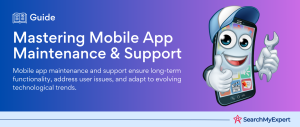Cross-platform development has become the cornerstone of modern application development. With the rapid proliferation of mobile devices, developers are constantly seeking tools that allow them to write once and run anywhere. In this article, we’ll delve deep into the top cross-platform development tools that have taken the industry by storm in 2023.
1. Flutter: The Dart of Mobile Development
Flutter, backed by Google, has emerged as a leading player in the cross-platform arena. Its unique approach, using the Dart language, offers a rich set of fully-customizable widgets to create native interfaces.
- Pros: Hot Reload, expressive UI, and native performance.
- Cons: Still young, limited libraries compared to older frameworks.
2. React Native: Bridging Web and Mobile
React Native, from the house of Facebook, leverages the power of React for mobile app development. It offers a rich set of components and native modules to accelerate the development process.
- Pros: Large community, hot reloading, and access to native features.
- Cons: Requires native modules for advanced features.
3. Xamarin: .NET’s Answer to Cross-Platform Development
Microsoft’s Xamarin uses C# to develop apps for Android, iOS, and Windows. With a single codebase, developers can access native APIs and utilize shared logic layers.
- Pros: Robust performance, native API access, and strong community support.
- Cons: Larger app size and licensing costs.
4. Appcelerator Titanium: JavaScript-Powered Development
Titanium uses a single JavaScript codebase to create truly native apps. With its MVC framework Alloy, it ensures a clean separation of concerns and faster development.
- Pros: Native UI components, strong ecosystem, and direct access to native APIs.
- Cons: Steeper learning curve for beginners.
5. PhoneGap/Cordova: Web Technologies for Mobile
PhoneGap, also known as Cordova, allows developers to use HTML, CSS, and JavaScript to build apps. It wraps the web content in a native container which can access device functions.
- Pros: Wide range of plugins, robust community, and ease of use.
- Cons: Performance issues for complex apps.
6. Unity: Beyond Gaming
While Unity is renowned for game development, it’s also a potent tool for creating cross-platform mobile apps. Its powerful graphics engine and scripting capabilities make it a top choice.
- Pros: High-quality visuals, vast asset store, and strong community.
- Cons: Overkill for simple apps and licensing costs.
7. Kotlin Multiplatform: Beyond Android
Kotlin, initially popularized for Android development, has expanded its horizons. Kotlin Multiplatform allows sharing code between Android, iOS, and the web.
- Pros: Concise syntax, seamless integration with Android, and null safety.
- Cons: Still experimental and limited libraries.
8. Ionic: Web Standards for Mobile
Ionic framework uses web technologies to create high-quality apps. With a rich set of UI components, it ensures a smooth user experience.
- Pros: Wide range of plugins, strong community, and active development.
- Cons: Not truly native and performance issues.
9. Qt: C++ Powerhouse
Qt allows developers to write applications in C++ and run them across multiple platforms. Its rich set of libraries ensures a seamless user experience.
- Pros: Powerful IDE, high performance, and vast libraries.
- Cons: Licensing costs and steep learning curve.
10. Tizen: Samsung’s Bet
Tizen, backed by Samsung, is an open-source platform for mobile, wearable, and TV apps. It offers a robust set of development tools for creating high-quality apps.
- Pros: Strong backing by Samsung, rich set of features, and open-source.
- Cons: Limited to Samsung devices and smaller community.

11. Framework7: A Fresh Perspective
Framework7 isn’t just another framework; it’s a free and open-source mobile HTML framework to develop hybrid mobile apps or web apps with iOS & Android native look and feel. It’s all about enabling you to create apps that have a native feel with a simple HTML, CSS, and JS framework.
- Pros: Super intuitive, rich UI components, and no external dependencies.
- Cons: Might not be suitable for highly complex apps.
12. Adobe AIR: Oldie but Goldie
Remember Flash? Adobe AIR is its evolved cousin, allowing developers to build web applications that run as standalone client apps on a variety of devices.
- Pros: Wide platform support, GPU acceleration, and a strong developer community.
- Cons: Declining popularity and the shadow of Flash’s legacy.
13. J2ObjC: Java for iOS
Google’s brainchild, J2ObjC, is a nifty tool that translates Java code to Objective-C for iOS (iPhone/iPad) apps. It’s not a UI tool, but it’s perfect for sharing non-UI code between Android and iOS.
- Pros: Leverage Java for iOS development, backed by Google.
- Cons: UI has to be written separately; it’s just for logic sharing.
14. Sencha Touch: Enterprise Grade Stuff
Sencha Touch, now part of the Sencha platform, is a leading cross-platform framework used to create efficient and visually stunning mobile applications. It’s especially popular among enterprises.
- Pros: High-performance animations, adaptive layouts, and a vast component library.
- Cons: Licensing costs and a bit heavy for simple apps.
15. Corona SDK: Not Just for Viruses!
Corona SDK is a cross-platform framework ideal for rapidly creating apps and games for mobile devices and desktop systems. It uses Lua, a lightweight scripting language.
- Pros: Rapid development, real-time testing, and a strong focus on 2D gaming.
- Cons: Limited to 2D graphics and Lua might not be everyone’s cup of tea.
Wrapping Up
As the tech world continues to evolve, the importance of cross-platform development tools only grows. These tools, each with its unique features and quirks, offer developers a plethora of options to bring their app visions to life across multiple platforms. Whether you’re a solo developer looking to launch your passion project or a large enterprise aiming for market dominance, there’s a tool out there that fits your needs. Dive in, experiment, and find the one that resonates with you. The world of app development is your oyster!
Redefining Digital – Partner with top Mobile App Developers.
Table of Contents
Toggle






